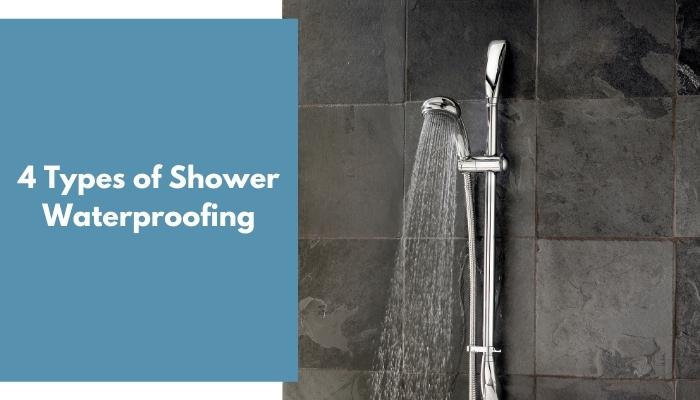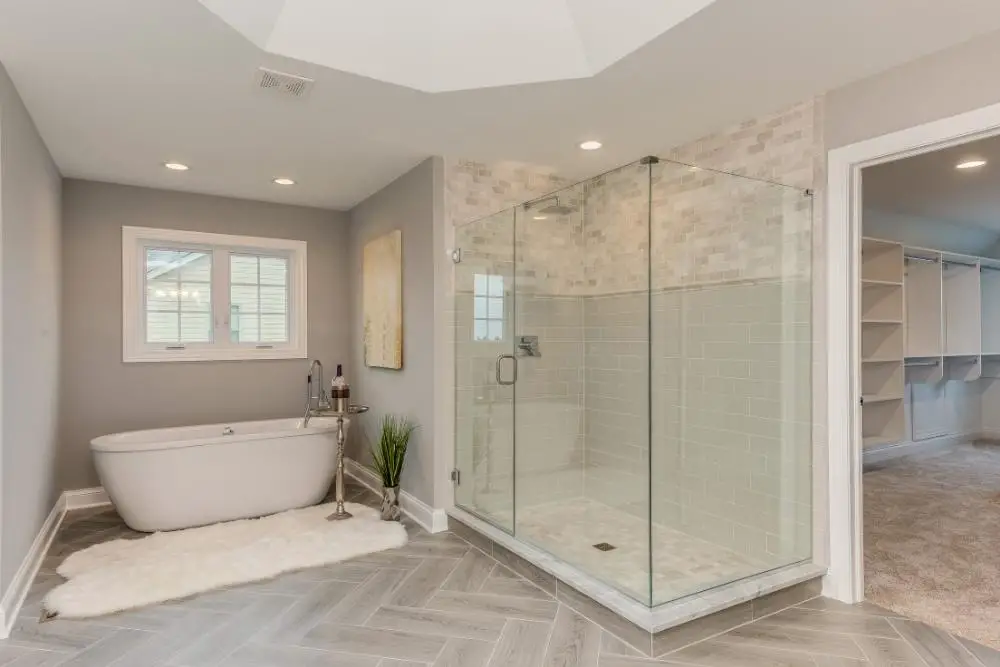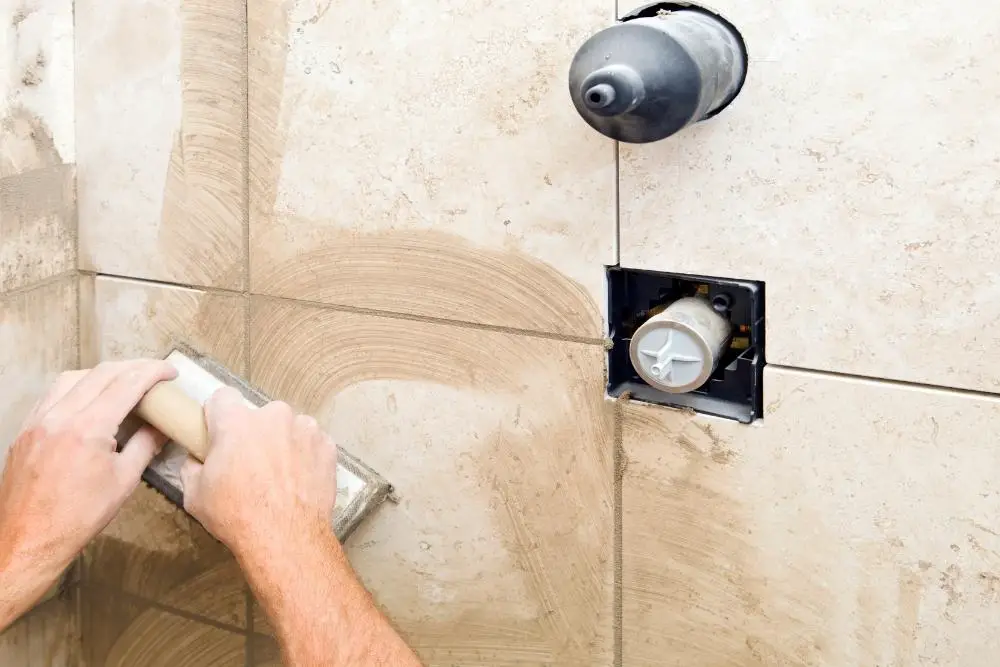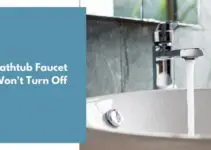One of the most common methods of bathroom renovations is shower waterproofing. This process involves choosing the system that will work best for your needs and budget.
These are commonly used to make a shower area waterproof: liquid membrane, sheet membrane, foam wallboard, and fiber cement backing board.
In this blog post, you will be able to master how these kinds of shower waterproofing can protect your bathroom from getting water damage.
Contents
4 Types of Shower Waterproofing
Water damage to a structure can cause various problems, such as mold and paint decaying. Fortunately, different shower waterproofing systems can prevent this issue.
Sheet Membranes Waterproofing
Prices pulled from the Amazon Product Advertising API on:
Product prices and availability are accurate as of the date/time indicated and are subject to change. Any price and availability information displayed on [relevant Amazon Site(s), as applicable] at the time of purchase will apply to the purchase of this product.
A sheet waterproofing membrane is a type of membrane used on concrete surfaces. There are various sheet waterproofing membranes, such as torch-applied ones and self-adhesive ones.
It comprises a thin sheet of synthetic fibers that reflects water away from its surface. This material prevents moisture from entering the shower wall and flooring.
Foam Wallboard Waterproofing
Prices pulled from the Amazon Product Advertising API on:
Product prices and availability are accurate as of the date/time indicated and are subject to change. Any price and availability information displayed on [relevant Amazon Site(s), as applicable] at the time of purchase will apply to the purchase of this product.
A foam backer board is an excellent choice for when the bathroom is constructed for the first time or when it comes into a complete teardown.
This type of board is durable and can withstand the weather without requiring a cement board.
One of the most significant weaknesses of foam backer boards is the seam between the panels. Usually, these products have a special glue that helps them bond together. However, this is usually not the most cost-effective option.
Liquid Membranes Waterproofing
Prices pulled from the Amazon Product Advertising API on:
Product prices and availability are accurate as of the date/time indicated and are subject to change. Any price and availability information displayed on [relevant Amazon Site(s), as applicable] at the time of purchase will apply to the purchase of this product.
Liquid waterproofing membranes are strips applied to the cement board before layering the tile. They do not require special hardware or chemicals to perform their function.
Follow the label’s directions when it comes to coating. Also, keep in mind that different brands require different requirements for different types of layers.
For instance, if you’re planning on adding a liquid membrane to a mortar shower pan, give it at least 72 hours before doing so.
Fiber Cement Backer Board Waterproofing
A fiber-cement backer board is a durable and low-maintenance material commonly used to cover the exteriors of houses. You can also use it to protect commercial buildings. Depending on the brand, this type of board can be used for various applications depending on the brand.
Factors to Consider When Installing a Shower Waterproofing
You cannot just install any shower waterproofing because that would be a waste. Always bear in mind that there are factors that you need to consider, like:
Coverage
It would help if you had waterproofing to cover a large portion of your shower area. It will be an assurance for you that there will be no water seeping into the walls and the floors. You don’t want to repair the bathroom more than once a year, don’t you?
Curing Time
What is the most convenient for you? Can you wait for a couple of days before the shower waterproofing is dry and ready for bath time? You need to consider the time you can spend waiting on the availability of the bathroom shower.
Reliability
A good quality waterproofing should have great flexibility and strength to resist water damage for a long time. It should not wash away after a few months of using the shower. The waterproofing should last for years to come.
How to Waterproof Shower Walls?
You can try different methods to waterproof a bathroom wall. For instance, you can place a plastic sheet between the cement and the stud. It forms a moisture barrier that prevents water from entering the wall.
Many people use water-resistant membranes to prevent moisture from entering a room. They can be installed directly over a cement backboard or substrate. You can also apply liquid and sheet membranes to prevent water damage to your bathroom walls.
Different Waterproof Paints for Shower Walls
The shower area is different from other parts of the house. It tends to remain moist most of the time, which means regular paint can’t protect it. To prevent water from entering the wall, apply shower waterproofing paint.
You should choose a paint designed to withstand the conditions of moist environments like the following:
Epoxy Paint
This paint can protect the walls of the shower perfectly against water damage. Its attractive appearance makes it an excellent choice for shower decoration.
Marine Paint
This type of paint is ideal for protecting against water-based wear. It can also prevent mold buildup.
Patented Branded Paint
Many paint brands have unique formulas that help protect shower walls. There are also various options for choosing paint for bathrooms.
How to Prevent Water Seepage in the Floors?
Having a waterproof shower floor can help prevent the damage caused by water seepage. It can also help prevent the decay of the timber below the floor.
Follow these steps to get the best results: First, clean the entire floor. Then, apply a high-quality primer to the walls and floor.
Before applying a new coat of paint, let the primer dry completely. Then, use a silicone layer over the existing shower floor and wall. It will prevent water from entering the joints and corners.
After thoroughly cleaning the floor, let it dry. Then, follow the same process again and apply another coat of waterproof liquid membrane. Before you start tiling, make sure that the shower floor is dry. This process is straightforward, and you can easily do it by yourself.
Frequently Asked Questions
Is Grout Waterproof in Showers?
Yes, grout is waterproof in a bathroom shower. Although tiles and grout are water-resistant, you need to install them correctly to avoid water seepage. It would be best to pack the grout mixture into the crevices of the tiles to make sure that no water can come in.
Also, curing it with the right timing is a crucial step in the process. Wait for at least 20 minutes to let the grout dry before wiping the excess.
On top of that, you need to wait for the grout to harden within 24 hours before taking a shower.
How Do You Protect a Wall Above a Shower?
You can put moisture-resistant paint on your shower panels using a brush or a rolling pin. Experts advise utilizing a color that has an anti-microbial or anti-fungal component.
Do I Need to Waterproof Shower Walls Before Tiling?
Yes, before tiling the shower walls, make sure they’re waterproof. It will prevent the water from flowing into the structural timber and floor.
You can use waterproof paint, which you can buy in your trusted hardware store or paint shop.
How Long Before Waterproofing Can Get Wet?
The curing time depends on the material used. A wet seal and fiber coat is ready to use in 2-4 days and will vary on how hot or cold the season is in your area.
When you use a complete cure, expect that your bathroom shower is ready to use in 4-5 days. The same will depend on the humidity in your area.
Do You Need to Waterproof Cement Board in the Shower?
Yes, to prevent water damage to the wood studs, you should waterproof the cement board in the shower. You can do this step by applying a waterproofing membrane.
Conclusion
The most trusted types of shower waterproofing are liquid membrane waterproofing, sheet membrane waterproofing, foam wallboard waterproofing, and fiber-cement backer board waterproofing.
Aside from the walls themselves, you also need to ensure that there will be no water seeping into the tile’s crevices. Using a grout can block the passage in the tiles.
The installation of shower waterproofing requires professional help. It would be dangerous and a waste of money when you do it yourself. Unless, of course, you have the skills.









